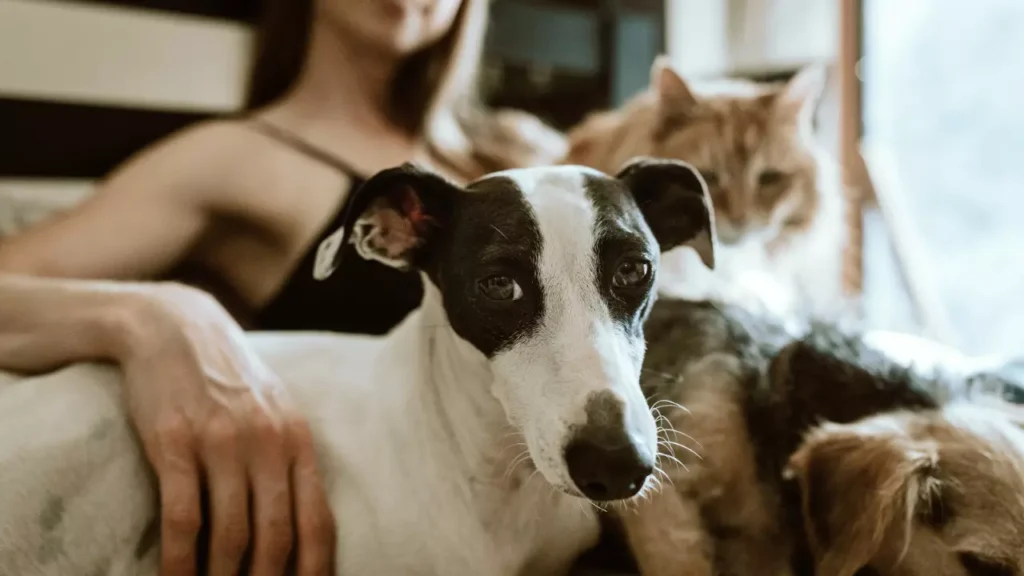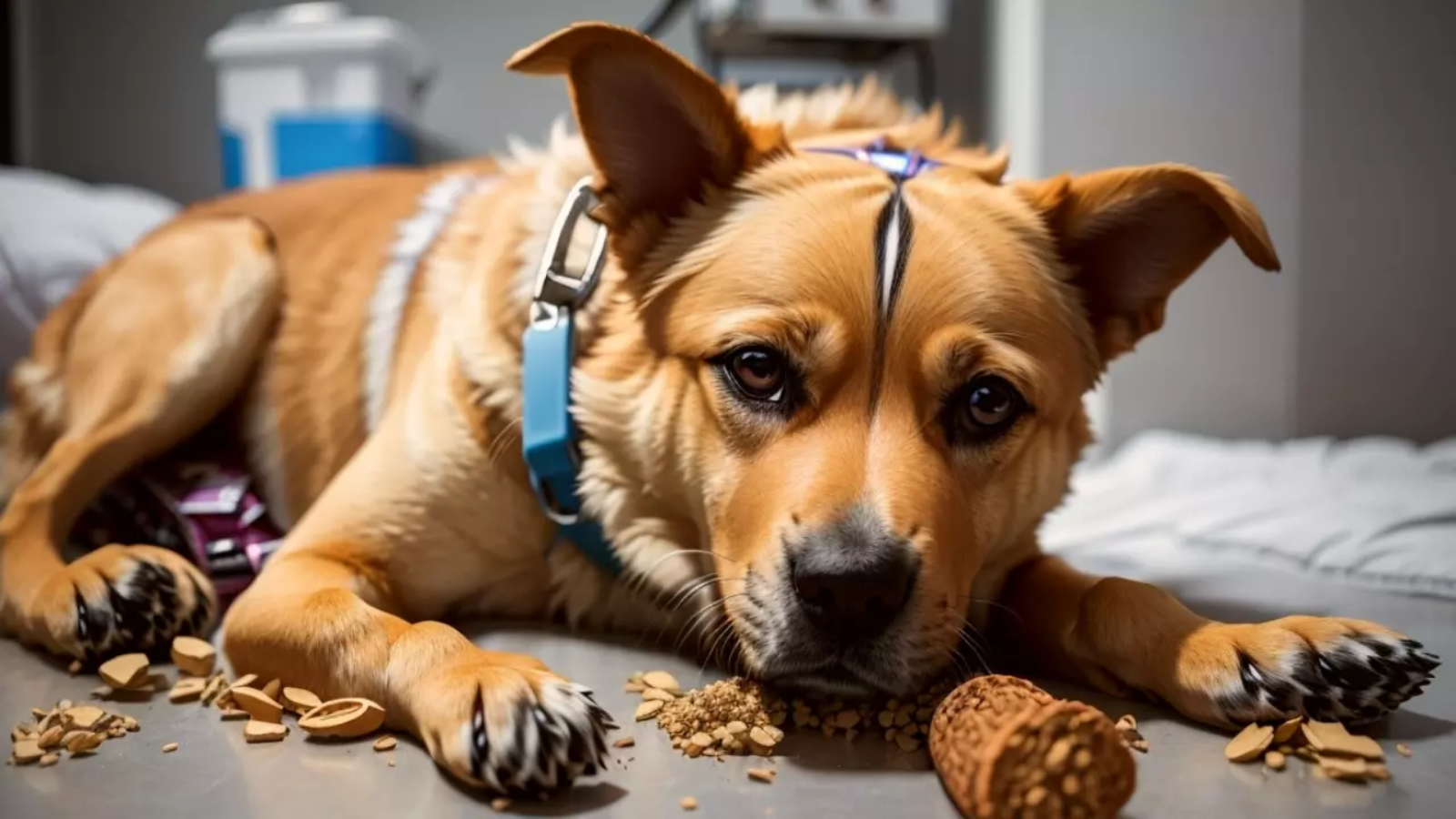
It’s completely stressful when your happiest pet dog suddenly starts acting unhappy, not eating food, and not being as lively as usual, even the saddest thing is when the dog suddenly stops roaming around you by wiggling their tail then You go to the nearest vet, and the vet doctor says your dog is suffering from Pancreatitis.
It’s heartbreaking for dog owners to see their dogs suffer from this deadly disease. But no worries, here are Some guides on How to comfort a dog with Pancreatitis and some treatment.
I did some thorough research on this because my closest friend lost his beloved pet dog named Lucy, who was suffering from Pancreatitis.
They say it’s never too late to take action, so I’m writing this blog post to help you comfort your dog diagnosed with Pancreatitis and provide safety precautions and treatments.
Table of Contents
How Does Pancreatitis Occur in Dogs?

See, Pancreatitis is a deadly disease you should not ignore. It is a condition that occurs in a dog’s pancreas. I am sure you know what the pancreas is.
If not, the pancreas is a small internal organ located on the right side of the dog’s body, connected to the small intestine in dogs.
The dog’s pancreas is a vital organ that produces proteins called enzymes. These enzymes assist in food digestion and help balance hormones such as insulin, which controls blood sugar and glucose metabolism.
So, due to daily wrong food habits and a lack of physical activity in the dog, the enzymes produced by the pancreas may struggle to digest foods in the small intestine and create trouble in balancing blood sugar levels and metabolism. This can lead to inflammation initially.
In simple terms, enzymes produced by the pancreas struggle to enter the small intestine to digest food. Instead of entering the small intestine for the digestion process, they start working within the pancreas itself. This creates inflammation in tissues or blood vessels.
As a result, the toxins from the inflammation spread throughout the body. Symptoms of Pancreatitis are below.
Some Potential Causes Of Pancreatitis In Dogs.
- Regularly Eating Wrong and Unhealthy Foods.
- Internal injuries on a dog’s stomach can occur after falling from stairs, high beds, or any elevated surface.
- lack of physical activity in the dog
- Infections on the dog’s body and not treating them on time.
- Toxic or dirty surroundings like garbage, chemical products, etc.
Early Signs and Symptoms of Pancreatitis in Dogs.
See, Pancreatitis is a painful disease. It can make the dogs less active, with tearful eyes, depression, and painful anxiety. Here are some Early Signs and Symptoms of Pancreatitis in Dogs.
- Frequent fever.
- Regularly Vomiting after Eating Food.
- Unusually inflated belly.
- Continuous weeping noise and teary eyes.
- Diarrhea (a dog’s poop may appear with bloody particles or be thin and watery).
- Frequent fatigue and less body movement.
Here’s How To Comfort a Dog With Pancreatitis.
Important note here!
Remember, you must not do your own treatment for Pancreatitis in dogs at home unless you have valid knowledge about the disease.
It’s a deadly disease, but the good thing is that up to 80-90% of dogs can recover from it if they are treated at the right time by vet doctors. Dogs usually and easily get recovered in a week after the right treatment.
Here are some guides on how to comfort a dog with Pancreatitis before and after treatment of the dogs.
1. Low Fat Foods and Healthy Drinks.

Low-fat foods are most important for dogs with pancreatitis. Here, I suggest that dog’s meals must be low in fat and low in glycemic. Suggested meals include brown rice, drained lean ground beef (cooked without fat), boiled squash, broccoli, chicken, turkey, eggs, etc.
Remember to use minimal or no cooking oil when preparing meals for dogs with pancreatitis, as the goal is to keep them low in fat and glycemic index.
It is important because if a dog suffers from or recovers from pancreatitis and then the dog eats the wrong food, there is a risk of pancreatitis in dogs again.
Avoiding added artificial sugar drinks is a must. Natural and seasonal drinks can be acceptable, but drinks should always be at room temperature. Freezing and artificial sugar drinks can harm the dog’s pancreas.
Suggested drinks include room temperature water, coconut water, boiled chicken or bone broth, green vegetable juices with a pinch of pink salt, and seasonal fruit juice. This comforts the dog’s belly and helps prevent regular vomiting after eating.
2. Pain relief medicine for pain
As I mentioned earlier, pancreatitis is a deadly disease, and it can sometimes be excruciating for dogs. They need to be continuously checked up at home and should be given pain relief pills or medicines at the appropriate time, as prescribed by vet doctors.
Whether it is causing no pain at all or only slight discomfort for dogs or an extremely painful condition.
How do we know if dogs are in pancreatitis pain? Here are some conditions.
- Breathing rapidly and panicking.
- Crying sounds and uncontrollable watery mouth (drooling).
- Uncomfortable while Sleeping
- Refusing to eat their meals.
- Frequent diarrhea or vomiting.
Even if a dog doesn’t show signs of pain, we must still take care of them and offer them certain medicines prescribed by vet doctors for future pain relief in dogs.
3. Motherly love and support

Motherly love and support are of utmost importance. Just like the care a mother provides, dogs must be treated with an abundance of care and attention.
I understand that you care for your dogs, but think of it in the way mothers take care of their children. They wake up in the late night to check if we are sleeping soundly, they call us to see if we are doing okay, just like that…
We need to take care of dogs in a similar way. Little, lovely mumble voices and hugs will definitely make them feel better, along with good, healthy foods. Regular check-ups increase the chances of their fast recovery and definitely provide them comfort. As some wise person once said, “Love is the greatest medicine.”
while on medication or between treatments of dogs with pancreatitis. A short walk is essential for increasing blood flow throughout the body, and for dog’s full recovery.
If they feel uneasy about walking, you can offer pain relief medicine as prescribed by the vet, or you can take the dogs for a walk after giving them their medicine.
Most Important
- Low-fat and low-glycemic food is important for dogs diagnosed with pancreatitis.
- Walking and exercise are essential.
Conclusion

Pancreatitis is not a bacterial or viral disease. It’s more than that; it’s one of the most painful diseases a dog can get, and often happens from poor Food habits. The most sustainable treatment for dogs can be fluid therapy.
The right treatment at the right time can save the dog, and if treated at the Right Time, Dogs can recover quickly.
So, please ensure that during medication, dogs receive the correct medicine prescribed by vet doctors. and your Motherly Love and Care is Important.
Otherwise, it’s one of the most painful diseases, and improper medication and care can wrongly affect the immune system of dogs, potentially leading to life-threatening conditions like seizures or heart attacks.
Wishing your dogs a full and healthy life, and I hope that this guide on “How to Comfort a Dog With Pancreatitis” has been helpful to you.
FAQS
Can dogs with pancreatitis still have treats?
Natural and seasonal fruits can be the best treats for dogs. Remember, artificial sugary treats can harm dogs.
Also, maintain low-fat and low-glycemic meals for dogs throughout their lives, even after recovering from pancreatitis, as wrong food choices can lead to pancreatitis in dogs again.
How to know if dogs have pancreatitis at home?
Dogs may sleep in a belly-up position if they suffer from pancreatitis. You might think the dog is sleeping comfortably, but here’s what you need to check.
Dogs may sleep in a belly-up position, but you need to check their heartbeat and temperature. A rapid heartbeat along with a high body temperature and a swollen or inflated belly may indicate that the dog has pancreatitis.
 Cart is empty
Cart is empty 
Leave A Comment